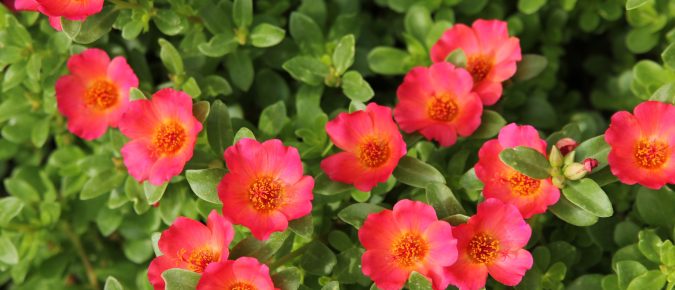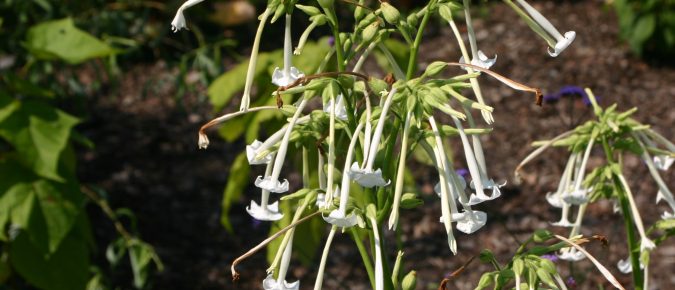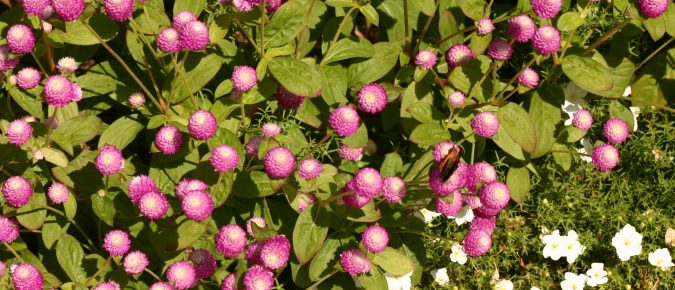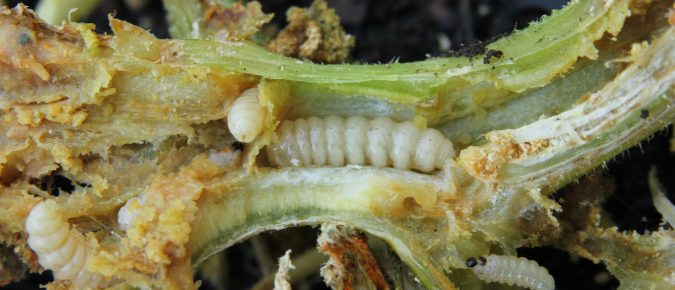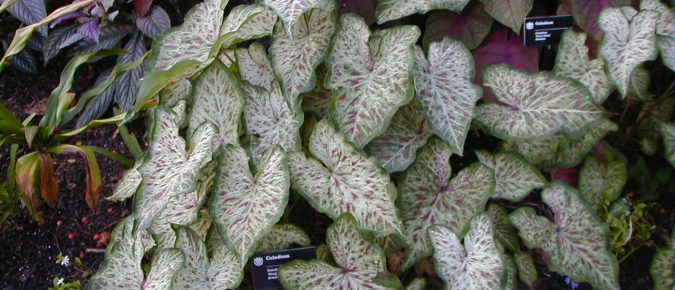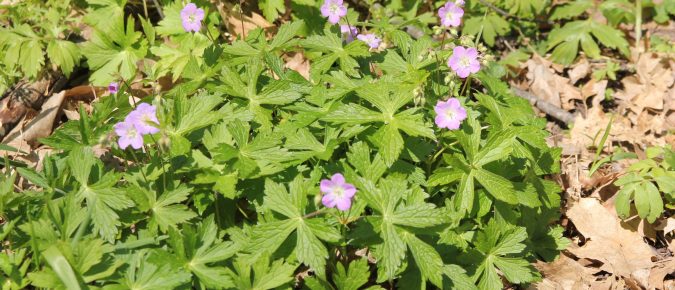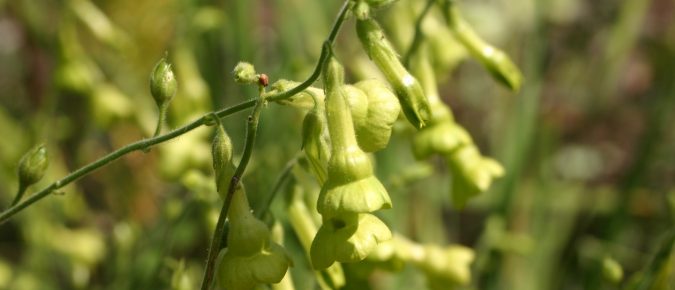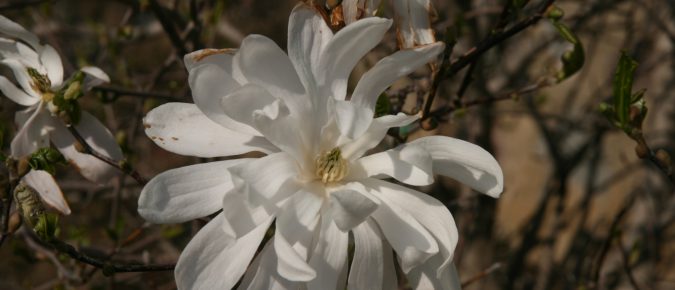Articles

Gardening Articles
Research-based horticulture information to help keep your plants and gardens thriving.
Moss Rose, Portulaca grandiflora
Moss rose, Portulaca grandiflora. does well in hot dry conditions where other annuals fail. This semi-succulent annual native to South America has showy flowers that bloom all summer long. Learn more moss rose and its many cultivars and hybrids in this article.
Flowering Tobacco, Nicotiana sylvestris
Flowering tobacco offers dramatic foliage and sweet-scented flowers in late summer. This annual plant with clusters of tubular white flowers atop huge, chartreuse to green leaves is easy to grow and combines well with many other annuals. To learn more about Nicotiana sylvestris read this article.
Gomphrena ‘Fireworks’
Looking for a different annual to add some zing to your garden? ‘Fireworks’ gomphrena is a tough, low-maintenance plant with long-lasting, intense hot iridescent pink blossoms with tiny yellow flowers that together resemble exploding fireworks. To learn more about this relatively new cultivar that works well in masses or in containers, read this article…
Squash Vine Borer, Melittia cucurbitae
The nemesis of almost everyone who tries to grow squash in the Midwest, squash vine borer is a difficult problem to control. The larvae of this day-flying moth tunnel in the stems of zucchini, winter squash and pumpkin, causing the plants to wilt and frequently die. To learn more about this native insect pest, read this article…
Caladiums
In the middle of summer some plants start to look stressed, but not caladiums – they thrive on heat and humidity. These tropical perennials have been cultivated as ornamentals for centuries, grown for their dramatic, brightly colored foliage. To learn more about these shade-loving “summer bulbs” read this article…
Gaura, Gaura lindheimeri
If you’re looking for an airy flowering plant with a long bloom period, gaura is a great choice as it starts flowering on long, wispy spikes in early summer and continues through a hard frost – making it useful as an annual where not hardy. There are also many compact cultivars. Learn more about this native North American perennial in this article…
Sage, Salvia officinalis
Sage may be best known as a flavoring but there’s much more to this aromatic plant, including attractive foliage and interesting flowers. Learn more about this versatile plant in this article…
Yellow Goatsbeard, Tragopogon spp.
Have you noticed yellow flowers blooming individually on tall, scraggly stems or fluffy seed heads like extra-large dandelions along the roadside? There are two species of Tragopogon, introduced weeds that both have the common name yellow goatsbeard and are both common in disturbed areas. To learn more about these plants read this article…
Ground Beetles (Carabidae)
There are all kinds of beetles found in gardens. One common type are the ground beetles, which as the name suggests, are typically found under leaves or debris, in cracks in the soil, or running along the ground. Most of these are predators, consuming all sorts of other insects including pests. Learn more about these beneficial insects in this article…
Wild Geranium, Geranium maculatum
Geranium maculatum is a pretty flowering plant native to eastern North America. In addition to filling natural woodland openings, this herbaceous perennial works well in informal gardens as well, offering loose clusters of pink flowers in late spring to early summer. Learn more about wild geranium in this article…
Nicotiana langsdorffii
Here’s a quick-growing annual that produces lots of pendant chartreuse flowers on branched flower stems at the top of the plant. This makes it a great filler among other herbaceous plants, and the soft green color makes it a perfect buffer between clashing colors. To learn more about Nicotiana langsdorffii, read this article…
Star Magnolia, Magnolia stellata
Star magnolia is a great choice for a small tree or large shrub with large, showy white or pink flowers in early spring. Read more about Magnolia stellata in this article.

